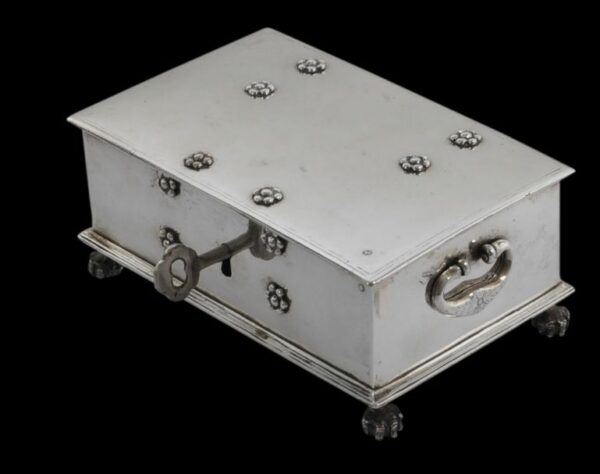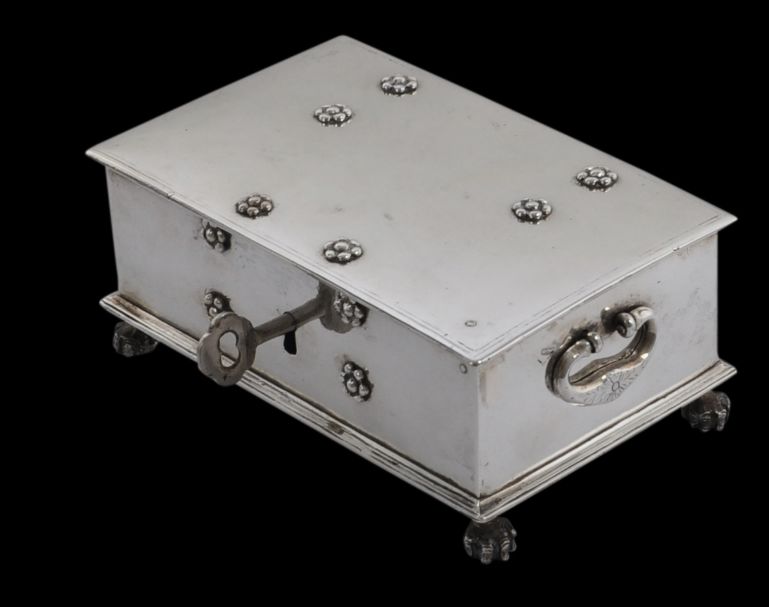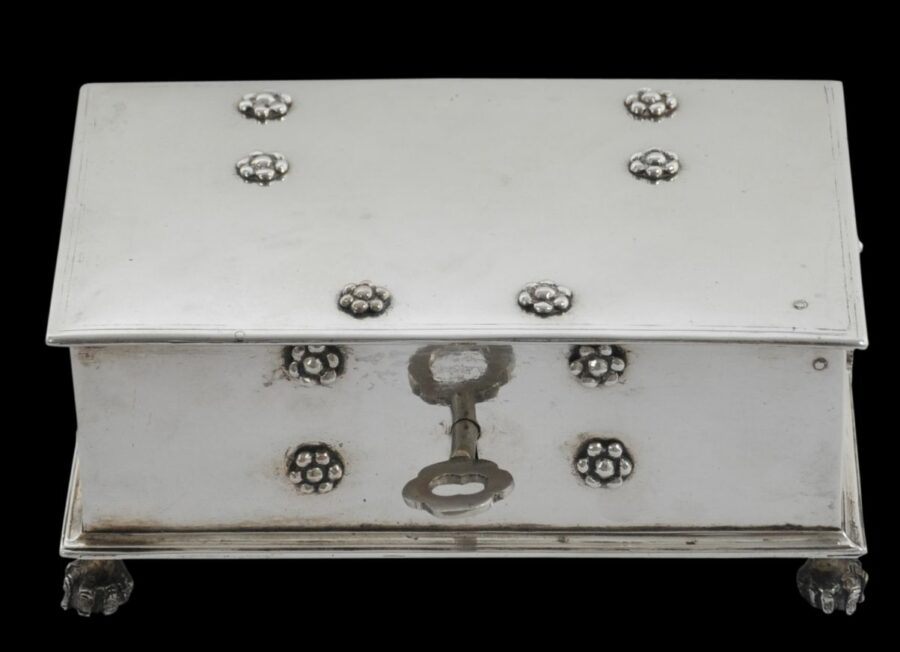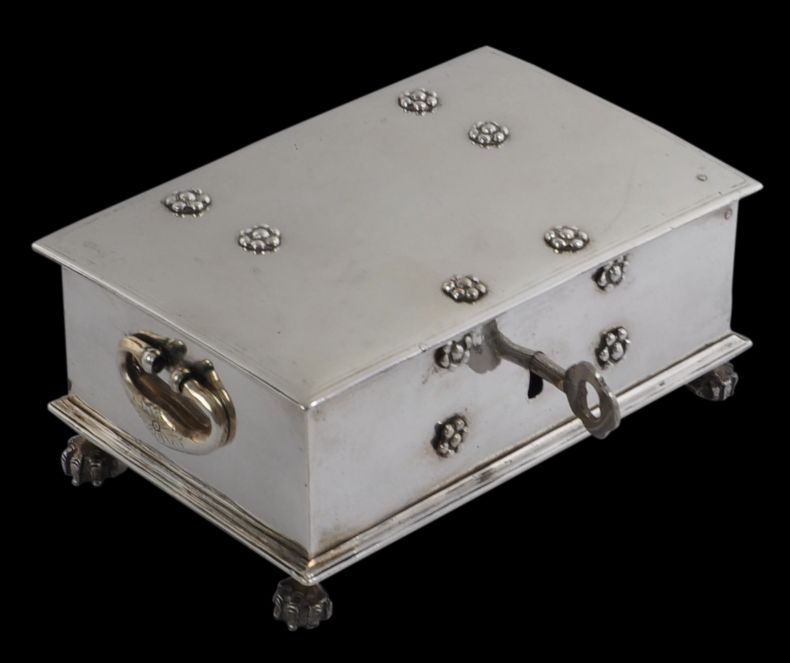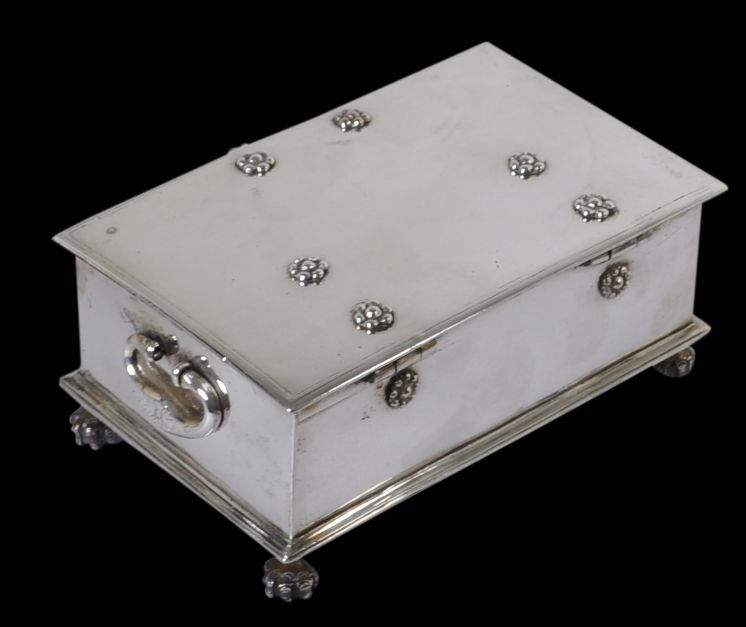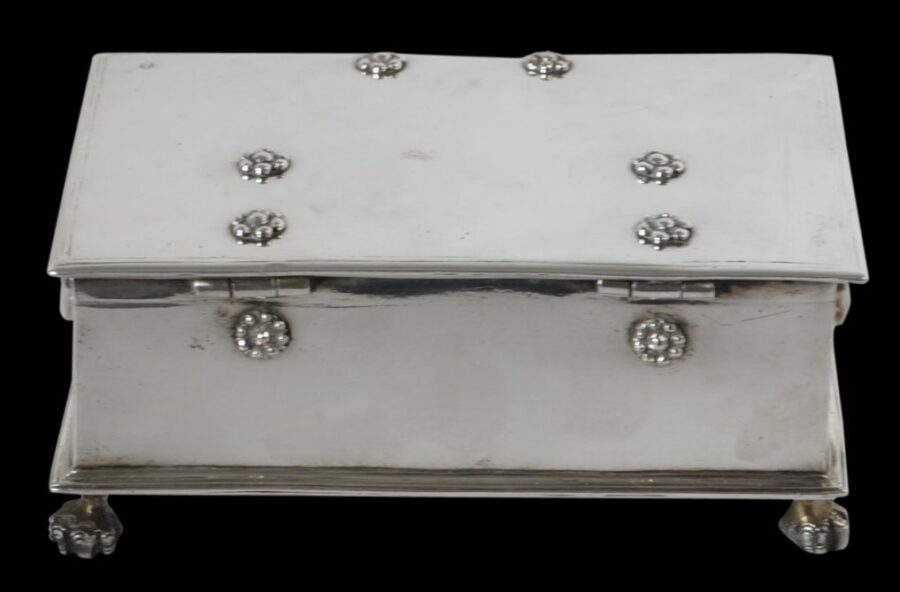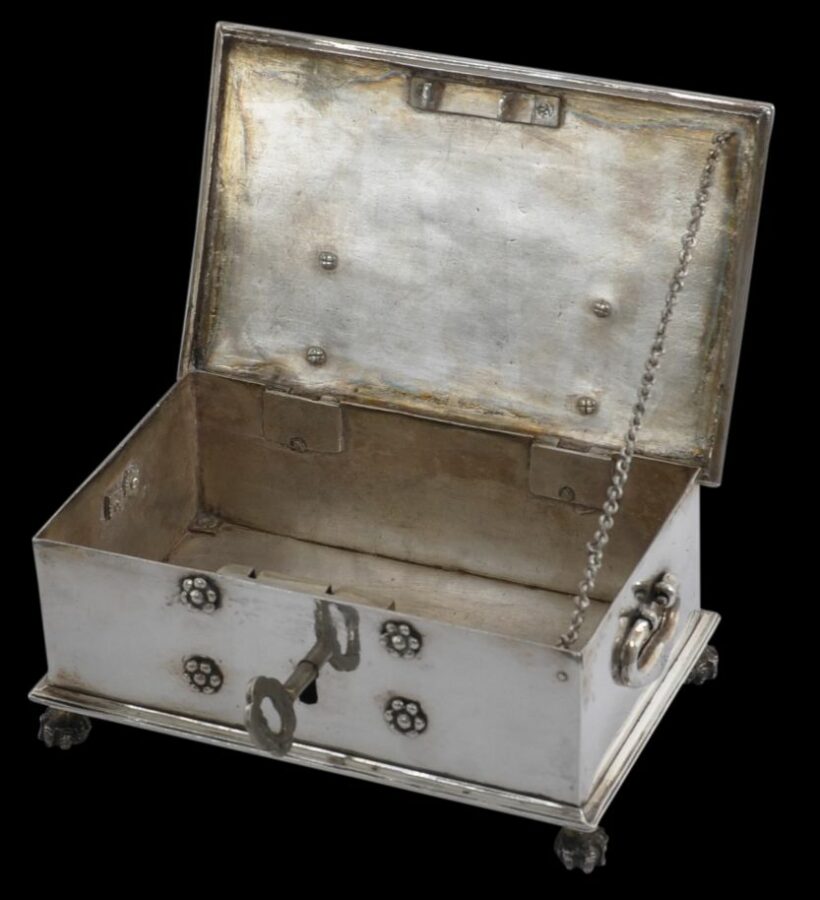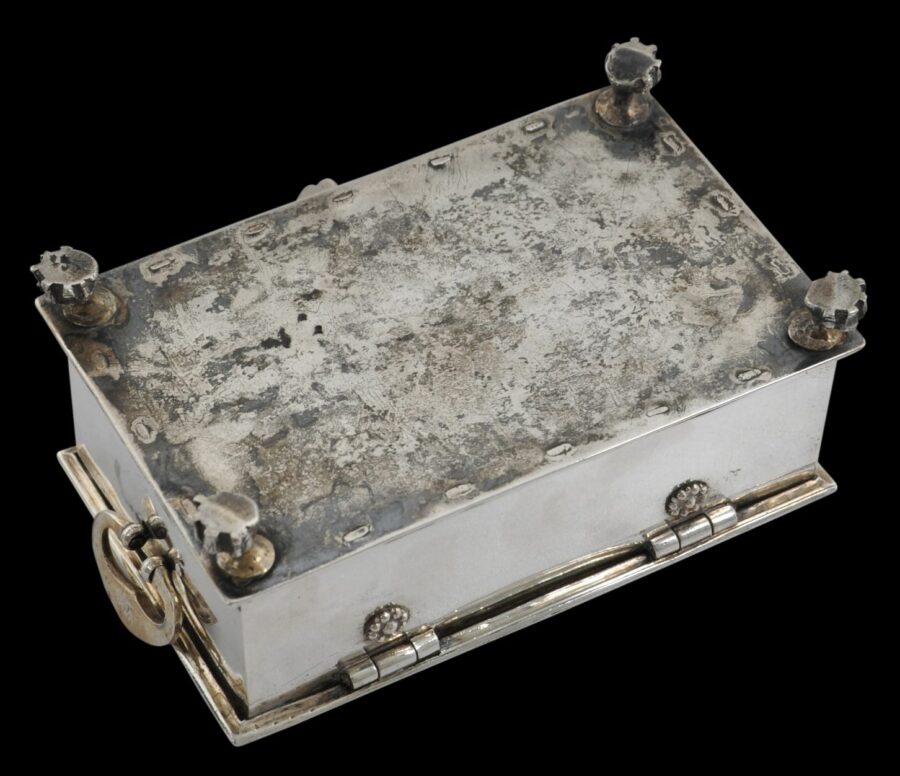Enquiry about object: 6578
Dutch Colonial Silver Betel Box & Key
Dutch East Indies, probably Batavia 18th century
width: 14.7cm, depth: 9.9cm, height: 6cm, weight: 586g
Provenance
UK art market
This fine, heavy silver box was made in the Dutch East Indies, most probably in Batavia. It dates to the eighteenth century and was made to hold betel, a mild, indigenous social narcotic taken by the locals, a habit that was then picked up by the colonial Dutch. Accordingly, it is probable that this box was made for a Dutch administrator or his wife.
It stands on four zoomorphic feet, and is of thick, beaten silver sheet. Floral-like studs hide the rivets used in its construction.
The box is fitted with a silver lock that is contemporaneous with the box. The lock still works and the original key is present.
A thick silver chain holds the lid to the box.
Two attractive, small engraved, solid-cast silver ‘C’-form handles adorn either end of the box.
A similar box attributed to 18th century Batavia and in the Gemeentemuseum of the Netherlands is illustrated in Voskuil-Groenewegen (1998, p. 148).
The Javanese habit of chewing betel was adopted by the local Dutch and exquisite boxes to hold the nut, the betel leaf and the other accompaniments were commissioned by the Dutch. The Dutch realised early on how important betel was to the indigenous people and how it was an essential part of hospitality including with the indigenous rulers. They quickly incorporated betel use with their dealings with local elites. Paintings that show the wives of Dutchmen at the time often show betel boxes prominently displayed. One such seventeenth century painting by J.J. Coeman which today hangs in the Rijksmuseum shows Batavia’s Cornelia van Nieuwenroode with her husband Pieter Cnoll and two of their nine daughters, one of who is shown holding a jewelled betel box (Gelman Taylor, 2009, p. 42).
The fashion for luxurious betel accoutrements and other finery saw the governor-general in Batavia Jacob Mossel issue a decree in 1754 stating that only the wives and widows of the governor-general, the director-general, members of the Council of the Indies and president of the Justice Council were permitted to use gold or silver betel boxes adorned with precious stones, (Zandvlieyt, 2002, p. 206).
The box is in excellent condition. There are no dents to repairs. It has an excellent patina. There are no apparent maker’s or assay marks.
References
Eliens, T.M., Silver from Batavia/Zilver uit Batavia, Gemeentemuseum Den Haag/W Books, 2012.
Krohn D.L. & P.N. Miller (eds.), Dutch New York Between East and West: The World of Margrieta van Varick, Bard Graduate Center/The New York Historical Society/Yale University Press, 2009.
Veenendaal, J., Furniture from Indonesia, Sri Lanka and India During the Dutch Period, Foundation Volkenkundig Museum Nusantara, 1985.
Veenendaal, J., Asian Art and the Dutch Taste, Waanders Uitgevers Zwolle, 2014.
Voskuil-Groenewegen, S.M., V.O.C. – Zilver: Zilver uit de Periode de Verenigde Oostindische Compagnie, 17de en 18de eeuw, Gemeentemuseum, Den Haag, 1983.
Voskuil-Groenewegen, S.M. et al, Zilver uit de tijd van de Verenigde Oostindische Compagnie, Waanders Uitgevers, 1998.


